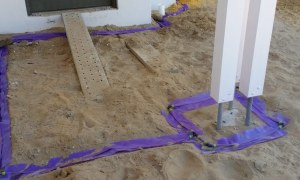🕑 Reading time: 1 minute
Job Safety Analysis (JSA) is a process that breaks down and identifies the dangers of a particular job operation or task by integrating health and safety practices to reduce the potential hazard to the workers. A job safety analysis suggests the safest way to perform a job.
Job Safety Analysis includes careful examination of each task within a job and documentation of the same to determine the possible safety hazard. Thereafter, a step-by-step process is laid to control the risk level.
Job Safety Analysis is also referred to as Job Hazard Analysis (JHA) or Job Hazard Breakdown.

Contents:
Job Safety Analysis in Construction Projects
A construction project consists of innumerable tasks. The work environment on the sites is constantly changing and prone to high risks, which cannot be eliminated completely but can be mitigated.
Job Safety Analysis is a lean approach to the management of safety in the construction industry. By identifying the risk-prone activities, diligent planning and efforts are put into execution to increase the safety level on site.
The laborers have to often indulge in working at heights, scaffolding, crane operations, trenching, electrical works, etc. These works should be reviewed by the health and safety inspector or construction manager.
The work should be broken down into smaller jobs to identify the hazard for each job, and develop a control measure for the same. This should be recorded throughout the lifecycle of the project, and as the work progresses, the JSA should be updated accordingly. The JSA should be reviewed and approved before the commencement of the job.
What activities require a Job Safety Analysis?
Although a job safety analysis can be done for many activities, priority should be given to the following activities:
- Activities known for the highest injury/illness rates.
- Activities or jobs with no room for error, as the slightest lapse could lead to a fatal accident.
- New activities or modified activities having new procedures.
- Complex activities requiring written instructions.
- Any activity with the slightest potential of being fatal.
Steps to create a Job Safety Analysis report
The process to formulate a JSA report comprises of four steps:
1. Select the activity to be analyzed
Determine the activities which require a Job safety analysis. Give preference to the activities which pose the highest threat to the workers' life. The ones with a lesser potential could follow.
In the end, you will have a library of JSA reports which need to be reviewed before the task, and updated throughout the project.
2. Break down the activity into specific tasks
The activities should be broken down into steps following a proper sequence. This is a critical step as the data will be used for future analysis or risk aversion.
3. Determine the potential hazards and risks in each task
The potential hazards and risks of injury in and around the activities should be identified. Risk matrix is a popular tool for determining the risks.

4. Provide Preventive measures and Alternatives
Delineate the safety measures for each risk and hazard. Conduct the risk assessment to determine the residual risk and repeat all the steps once again. Eliminating a hazard is the goal, but in case it cannot be eliminated, it should be contained. OSHA’s standards and regulations should be referred for intricate details of a risk.
Benefits of Job Safety Analysis
- Health and safety awareness amongst the entire team is created. The communication among the supervisor and laborers gets better, and acceptance of safe work procedures is promoted.
- Training improves the knowledge of safety requirements among the employees. Thus, simultaneously training documentation is also done.
- The likelihood of injury is reduced. This can add to accident-free man-hours on the sites. Companies often boast about the same with pride.
- The written operating procedures can serve as guidance for initial training or infrequent activities. It sets a standard for observing safety measures on the site.
- Further, it helps in performing extensive investigations of accidents.
FAQs
 Why is JSA important?
Why is JSA important? Job safety analysis is important for identifying the dangers of a particular job operation or task.




Benefits include improving communication, setting safety standards, employee training, and prevention of hazards.




The four elements that must be a part of JSA are: People, Process, Environment, and Equipment, Tools and Materials.
Read More: Safety Procedures at Construction Site – Safety Precautions and PPEs
Read More: Quality and Safety Concern in Building Constructions


